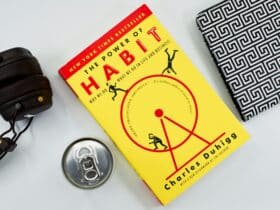A few years ago, I got a golden opportunity to move internationally. I said Yes! pretty much without thinking. Then the shock wore off…
What had I just agreed to?
How could I undertake to leave home for Europe?
The reality set in soon that there would be many things to do, large and small, to successfully relocate. Passports, visas, tax consultations, the inventory of every single item we own…
And how to coordinate all these things at the right times with my spouse?
Enter Kanban.
Kanban is a work tracking system created for manufacturing. Tasks flow through different phases, from left to right, such as To-Do, Doing and Done. It was created to be flexible, so works with any set of tasks. Personal Kanban takes the industrial process and makes it accessible for individuals. I’ve adapted it here as Kanban for home projects.
Kanban worked perfectly in my international move scenario for four reasons:
- It got every task written down and out of my head so I could stop wondering if I had forgotten something important.
- I could control how many tasks were in flight at once.
- Moving the tasks across the board showed progress and kept me motivated.
- The board instantly communicated task status.
What I really love about Kanban is that physically moving tasks across the board has more dimensionality than ticking boxes in a to-do list. Plus it limits me to only working on a few items at once. Instead of letting me hop around to the easiest thing, it makes me focus on what needs to be done now.
Kanban tool set
Mindmapping
The first step was to write out a list or a mind map of everything that needs to be done. Paper or software doesn’t matter. Each item that is actionable becomes a separate note or card.
Sticky Notes
Anything you can write on that can be moved around would work. The quickest way is to write each task on a Post-it. Make three column headings – To Do, Doing and Done. Place all the notes in the To Do column.
When you’re ready to work on a task, move it to the Doing column. Set a limit to how many tasks can be in progress at once. Three is a good number. That way you won’t take on too much at once.
Then watch them pile up in the Done column as you accomplish each task!
Trello
If paper doesn’t suit, I’ve also used Trello for major home projects. It’s quick to set up, though not as quick as sticky notes. It’s free, and you can share a board easily with your family.
Set a custom background for some motivation. Fill in the task name on the card. Click on the card to see inside it and add lots more detail, links, attachments, etc.
Just like with the sticky notes board, move the cards through to the Done column as you work on them.
Sticky Notes vs. Trello for Kanban
So which one did I use for my big move? Both!
I used sticky notes on the fridge for my move abroad. Sticky notes give a much greater satisfaction when you move tasks to done. You can play with the placement of sticky notes and aren’t locked into a grid.
For my move back to the US, I used Trello. Because I had to move before my spouse, we needed an online system to share notes and progress. One advantage of Trello is that you can set due dates on the cards and get an email reminder when the date comes up.
Use the Kanban method that works to manage your home project, and remember to check your board daily. You’ll see how organized you feel knowing everything you need to do is represented right there visually.


















